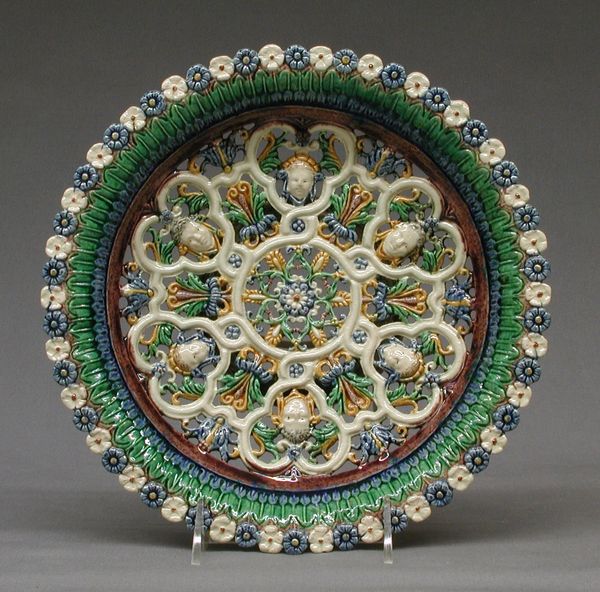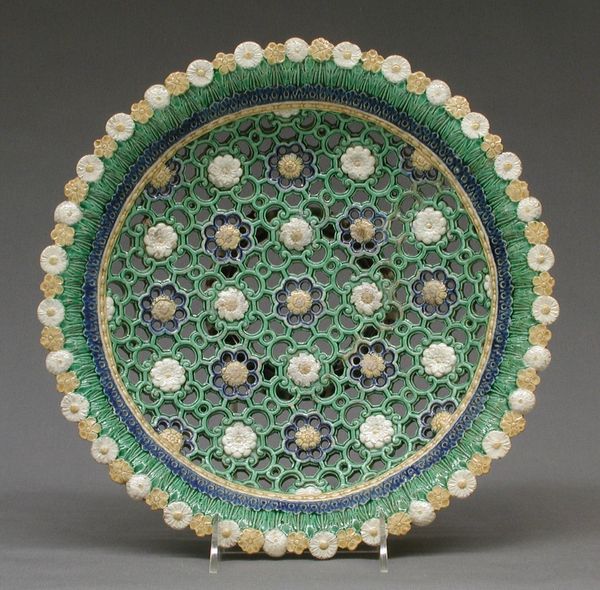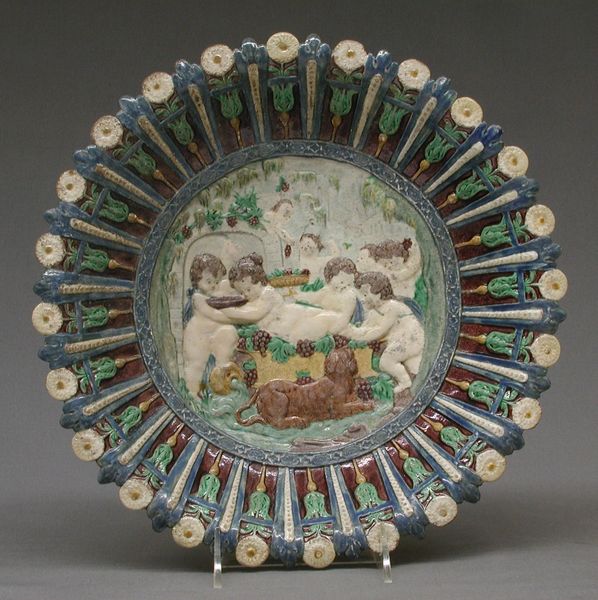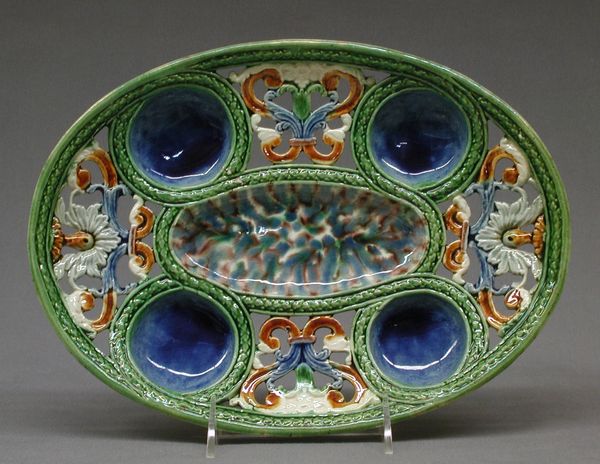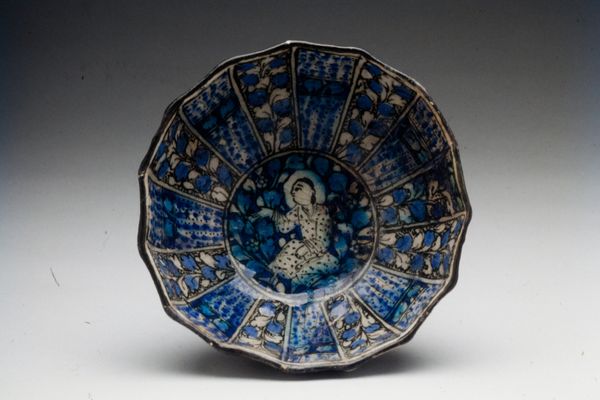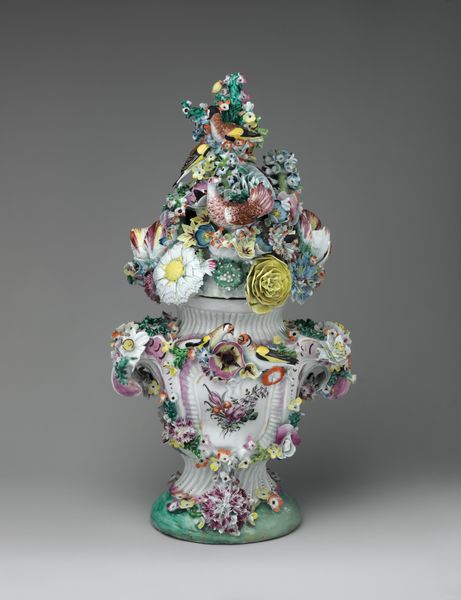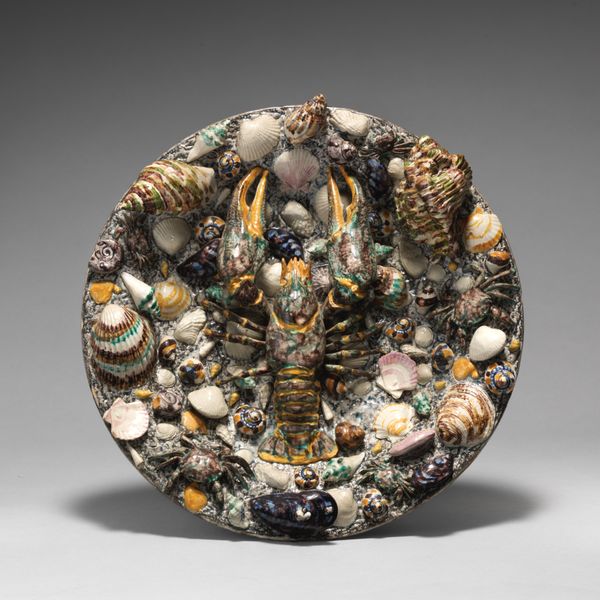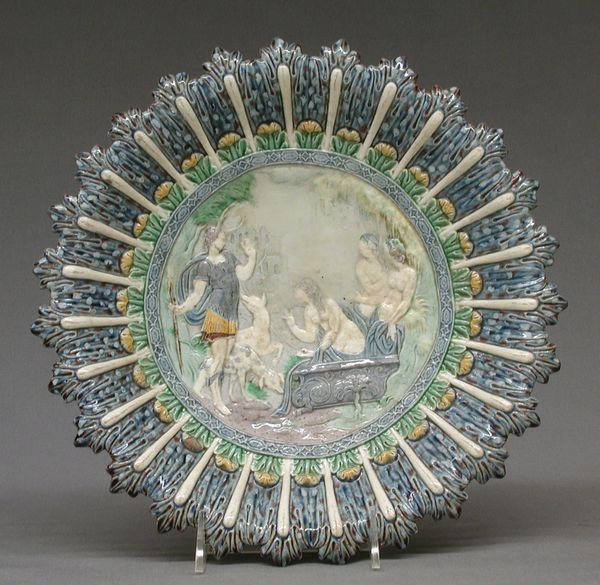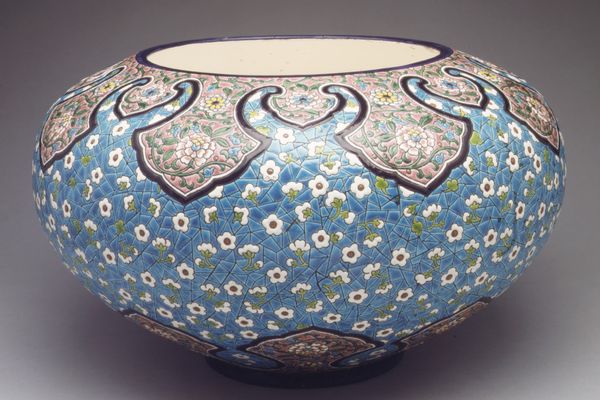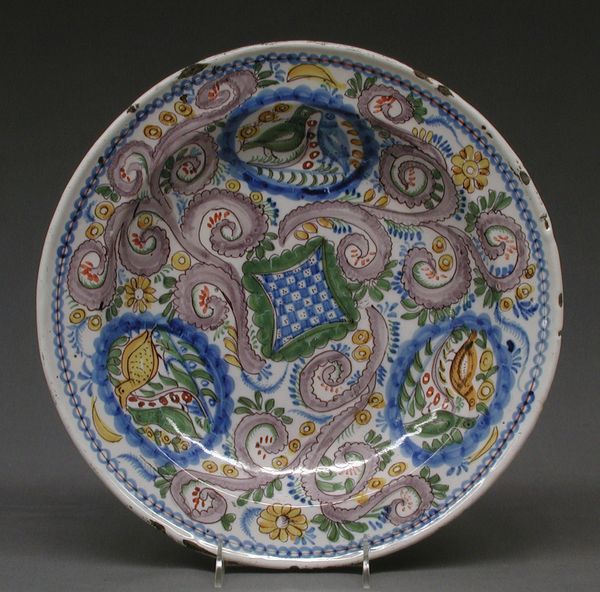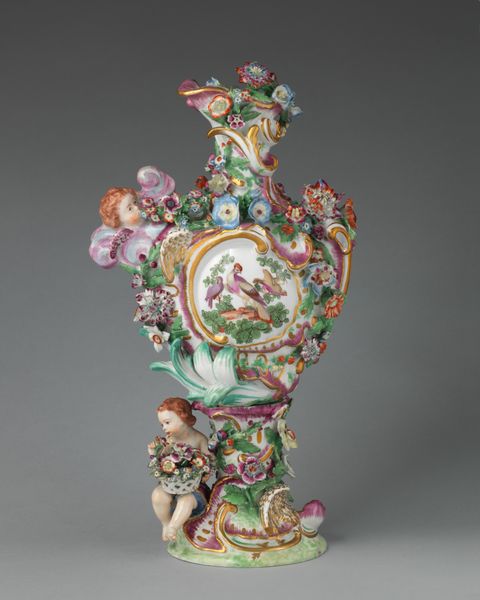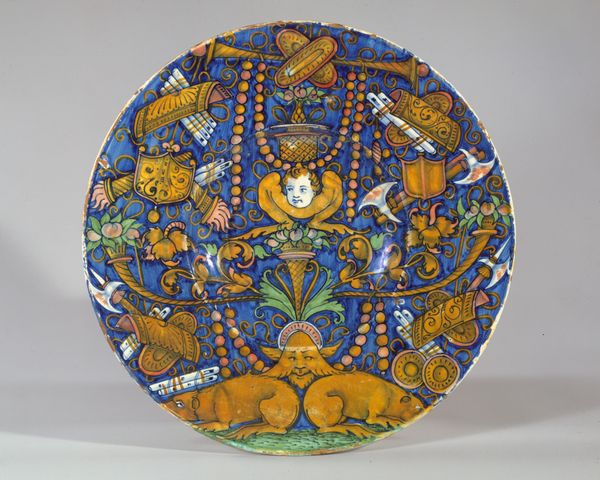
Dimensions: Overall (confirmed): 2 9/16 × 9 11/16 × 9 1/2 in. (6.5 × 24.6 × 24.1 cm)
Copyright: Public Domain
This dish was made by Bernard Palissy sometime in the 16th century, crafted from glazed earthenware. Palissy was a fascinating figure, a self-taught potter who burned his furniture for fuel, all in pursuit of the perfect glaze. Palissy was known for his so-called "rusticware". He achieved this highly ornate, colorful style by pressing molds into clay, firing them, and then adding layers of colored glazes. Each firing was a gamble, with the potential for disaster. The high-relief decoration, with faces framed by vegetation, speaks to the Renaissance interest in classical forms, combined with a close observation of nature. But don't let the aristocratic subject matter fool you. This was not a precious metal object. It was earthenware, a relatively common material, albeit elevated to a high level of artistry. Palissy blurred the lines between fine art and craft, offering luxury to a wider market. His work speaks volumes about the burgeoning consumer culture of the Renaissance, and the enduring appeal of handmade artistry.
Comments
No comments
Be the first to comment and join the conversation on the ultimate creative platform.
